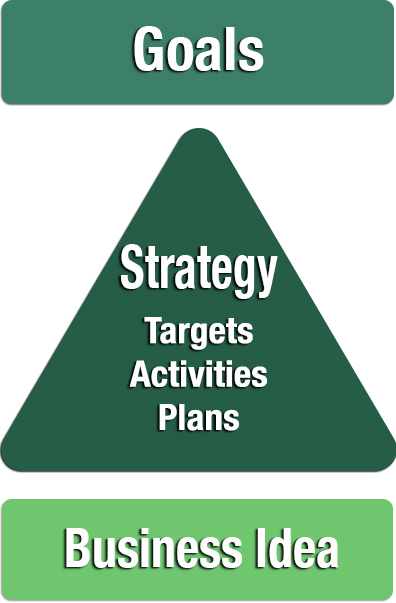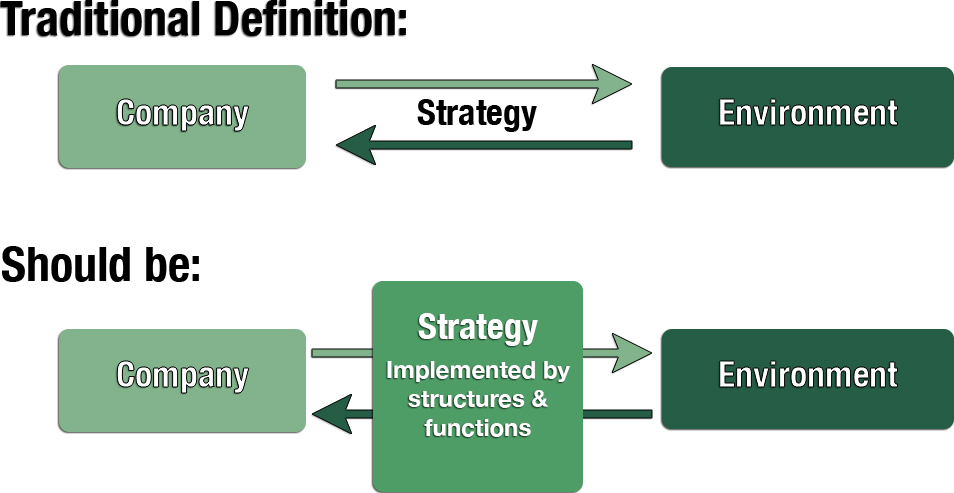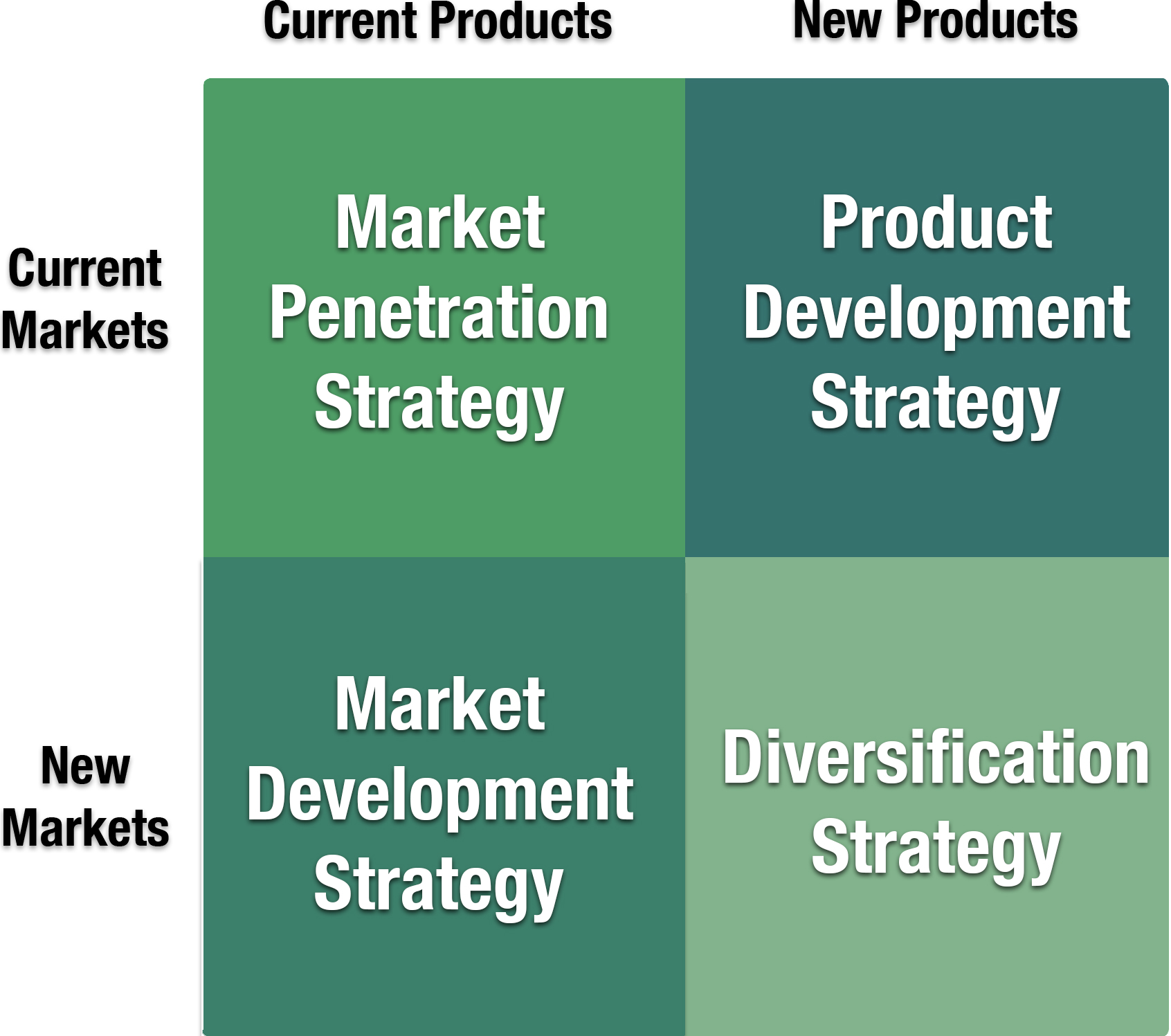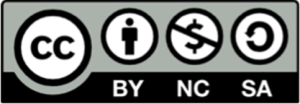2.2 Approaches to Strategy
After reading this section, students should be able to …
- Explain how the approach to strategy has changed over time.
Strategy is a nebulous concept with multiple definitions and little consensus regarding its makeup. One reason for this difficulty is that the term ”strategy” often refers to different hierarchical levels, such as the corporation as a whole, the strategic business unit, and the product (note that for smaller companies, the corporate and strategic business unit levels may be the same). Strategy is also used in a variety of contexts such as marketing, distribution, or communication and ironically, marketing researchers often do not have a common understanding of strategy (Greenley 1989). Although it is a critical part of strategy research, the strategy concept has no universally accepted definition (Niemelä J. S. 1993).
A major difficulty in implementing marketing strategies is that the current definitions are exceedingly vague and provide no guidance for the strategic planning process or the decisions that must be made. Our approach is to view strategy in the context of the decisions a manager must make as well as the information needed to make those decisions. In this way, we begin to illustrate the practical steps that occur in a successful strategic planning process. In this text we emphasize the principle that the strategy concept must tell what should be done when making plans and decisions concerning strategies.
There are many schools of thought regarding how the process of strategic planning actually occurs. Academic research has developed along a dichotomy of rational versus incremental planning (Menon 1999). The rational school believes that a core group of company managers deliberately formulate strategy. The incremental school claims that strategy emerges within a company through its day-to-day activities. Much of the work from the rational school originates from Ansoff (1965), while Mintzberg (1994) is commonly associated with the incremental school. Like Mintzberg, Ohmae (1999) suggests that “effective strategies do not result from specific analyses but from a particular state of mind, a state in which insight and consequent drive for achievement, often amounting to a sense of mission, fuel a thought process that is basically creative and intuitive rather than rational.” In practice, strategic planning will be unsuccessful unless both of these aspects are incorporated (Wilson 1998).
When viewing strategy from outside the company, the distinction between these two concepts is not so critical. Even if strategies have not been developed through a logical process as described in the rational school, they can nevertheless be seen in the activities of a company. In other words, even if strategies have not been defined, company activities and their results can be used to characterize strategies.
2.2.1 The General Nature of Strategy
Although there are differences in definitions for strategic planning and strategy, some general features of strategy can be outlined. There are many classifications or definitions of strategy. For example, Niemelä (1993) identified the following approaches to strategy:
- Strategy as an atmosphere or a framework
- Strategy as a plan resulting from a formal planning process
- Strategy as a position
- Strategy as a pursuit of competitive advantage
- Strategy as a pattern of decisions and actions
The following review separates approaches to strategy into three simple categories from general to specific. The categories parallel historical development of the strategy concept.
Strategy as a Framework or Atmosphere
Particularly in the 1950s and 1960s, it was very common for firms to view strategy as an atmosphere or framework that influences all the activities of the company. Strategy directs all the decisions made in the company, but it does not define what kind of decisions are strategic. This approach does not define what to do when planning strategies. Instead, it more generally describes norms, attitudes and “the way of thinking” in the company. Thus, the term “strategic” came to be almost synonymous with “important.”
The idea of strategy as a framework can be seen in Figure 4-1, where it is referred to as a tool of management. The functioning of a company is based on its business idea (mission), and is aimed towards specific goals within a framework formed by strategy. Strategies are defined by top management and are based on analysis of internal and external conditions.

For example, in small companies management may not recognize the necessity of defining specific strategies, and may instead form strategies spontaneously as a sum of the targets and principles of action (Luostarinen 1975). On the other hand, when strategy develops over a long period, as if by itself, it forms a spirit or atmosphere. The existence of a spirit or atmosphere affects decisions and actions, developing into principles and guidelines by which the long-term goals of the company are to be achieved. The choices made in a company can be described by pairs of concepts like aggressive – defensive, active – passive, or innovator – follower. The atmosphere has also been described with expressions like “production-oriented strategy,” “business-minded strategy,” or “marketing-oriented strategy.”
Strategy can be described as laying the groundwork of general principles through which the company tries to secure its competitive advantage, customers, and fully utilize its resources (Kotler 1957). This demonstrates three cornerstones of strategic thinking: customer attraction, competitor consideration, and company resources development. However, when using a framework concept of strategy, the actual contents of the strategy often remain undefined. The definitions describing strategy as a framework or atmosphere are not operational. Making inferences and decisions concerning strategies require strategy concepts with clear ways of measuring them.
Strategy as an Adjuster Between a Company and its Environment
Kotler defined market-oriented strategic planning as “the managerial process of developing and maintaining a viable fit between the organization’s objectives, skills, and resources and its changing market opportunities. The aim of strategic planning is to shape the company’s businesses and products so that they yield target profits
and growth” (Kotler 2000). Here he emphasizes a basic characteristic of strategy – as an adjuster between a company and its environment (Figure 4-2). This view of strategy has become common since the 1960s, but in most cases, how the adjustment takes place is left unspecified.
The pioneering work of Ansoff (1965) has had great significance as the precursor of nearly all analyses of strategy. The “adjuster” idea was evident in his early work. The “ecological model” of strategic planning presented by Thorelli and Becker (1980) demonstrates well the close connection of a company and its environment and strategy as an adjuster. Their basic idea is that every company, like all biological organisms, is dependent upon its environment. The satisfaction of people’s needs is the only reason this environment needs companies. Customers, therefore, have a specific emphasis in this model.
According to Thorelli and Becker (1980), goals give direction for setting strategies. The results of everyday activities are the measures of the effectiveness of those strategies. If the results are unsatisfactory, the strategy is not functioning correctly as an adjuster between the company and its environment, indicating that the strategy must be further developed. Although the authors define strategy as an instrument in the adjustment process, they do not define strategy thoroughly. Strategy is said to be the approach or position that a company takes in order to succeed in its actions. Again, this definition is somewhat insufficient because it is not operational, it does not specify what must be done when making plans and decisions concerning strategies.
Strategic position is closely related to the relationship between a company and its environment. A strategy directs a company into a certain relationship or “strategic position” within its environment. A change in the company’s environment forces management to pay attention to its strategic position. Management must then evaluate the product/market combinations with which the company operates.

Strategic positions and ways of change are often described using “Ansoff’s Window,” presented in Figure 4-3.

A company can develop its strategic positioning in four ways:
- By developing current activities (market penetration) the company tries to strengthen the position that its products have in current markets.
- Market expansion (market development) is a way to develop strategic positioning where new markets are sought for current products, either by finding new customer groups or by finding new market areas.
- Product expansion (product development) is a way to develop strategic positioning by offering new products and/or significantly improved current products to current markets.
- Diversification means moving into new business areas, usually by buying companies from areas or fields with better growth possibilities (Ansoff 1965).
Practical examples of these strategies are provided in Example 4-2. Typically, companies follow several at the same time. In fact, pursuing market penetration, market development, and product development at the same time is a sign of a progressive, well-run company (Ansoff 1957).
Example 2.2: Strategic Options as Outlined by Ansoff’s Window
Ansoff’s Window describes the following four methods for developing strategic positioning:
Market Penetration – essentially, market penetration is gaining market share for an existing market. I-joist manufacturers have heavily targeted the Southern California residential floor joist market. Through market penetration, they now hold the dominant market share over the traditional product, solid sawn lumber.
Market Development – In North America after the advent of OSB, structural plywood producers (especially in the West) found themselves at a huge cost disadvantage. Consequently, OSB was quickly taking market share from the major traditional market for plywood, home construction. Because of the cost disadvantage, market penetration was not a viable option. Instead, many companies relied heavily on Market Development. This meant they went after new markets to find customers for their products, such as industrial uses like truck trailer bodies, furniture frames, and pallet decks.
Product Development – it is natural for companies to change their products according to the evolving needs of the customer base. Those companies that do this more efficiently will recognize an advantage. Following the plywood example, the industry also developed new products for new markets. The Big Bin, developed by companies and APA – The Engineered Wood Association is a good example. The Big Bin is an engineered, plywood substitute for 55 gallon plastic and steel drums. These are often used by food processors to transport liquid concentrates such as tomato paste or ketchup. The liquid is contained in a disposable plastic bag. Since the Big Bin is made from panels, it can be dismantled and reused. An additional bonus is that when it is empty, it can be shipped flat, reducing transportation costs.
Diversification – Related diversifications means staying within the broad confines of the industry. This could be, for example, forward integration of a paper company into converting operations for products such as boxes or paper bags. Unrelated diversification is moving beyond the confines of an industry. Diversification was a popular trend in all industries in the 1960s, and forest industry companies invested in a wide array of unrelated businesses. Boise Cascade Corporation invested in a power plant in Cuba and retail lumber yards in the US south; Enso Gutzeit purchased a ferry and started a shipping line. Real estate and housing construction were popular diversification targets. Most of these businesses have since been divested as companies moved to concentrate on core businesses and core competencies (Ansoff 1965). (Thorelli 1980).
Ansoff’s concepts of strategic positioning have inspired many followers. For example, portfolio analysis in connection with strategic planning is clearly based on Ansoff’s preliminary work. How portfolio analysis can be used when choosing strategic business areas, products or markets will be described later in this chapter.
Precise and operational definitions of strategy were emphasized by Ansoff (1965) when he defined it as a move or series of moves that a company makes. Thorelli and Becker (1980) refer to the same idea when stating that the best strategies are those that are based on the use of relative advantage and aim at satisfying precisely defined customer needs. Efforts to precisely define strategy led to consideration of the components which constitute strategy. These components should be well-defined and measurable, as discussed in the next section.
Strategy as Strategic Decisions
Ansoff (1965) provided a starting point for the analysis and development of strategy components and strategic decisions. In his opinion, the traditional definitions of the common thread of the company based on mission and the business concept of the firm are too loose and vague. As a replacement, he developed a strategy system composed of the following four components:
- Product/market scope
- Growth vector
- Competitive advantage
- Synergy
Product/market scope is the starting point for the definition of strategy. It defines the product area of the company and the markets to which the products are offered. The growth vector defines the direction of company development. The competitive advantage utilizes the finding of product and market areas, and determines which markets best match the characteristics and strengths of the company, giving it a strong, competitive market position. Synergy is produced by the proper combination of various resources and actions. A successful combination can give the company more possibilities and resources than any of its resources or actions used separately.
The marketing strategy definition we use takes a modular approach. In other words, marketing strategies are made up of several key components, as Ansoff’s work suggests. Careful definition of the product/market area is an essential point of the modular approach. It is worth noting that three of Ansoff’s four strategy components are primarily marketing oriented; product/market scope, growth vector, and competitive advantage. Only synergy refers to the internal use of research and production resources.
According to the concepts of Shirley et al. (1981), the five key decisions that make up a company’s marketing strategy are:
- Customer mix
- Product mix
- Geographical limits of market area
- Competitive advantage
- Goals (evaluation criteria)
This approach stems from the same ideas that Ansoff puts forth, but adds aspects which make the strategic decisions more detailed and operational. When a company defines its strategy, it defines the products, customers, geographical limits of the markets, and competitive advantages on which the use of marketing tools will be planned. It also defines the goals which the company tries to achieve through its actions within these four parameters. All these decisions together put the company in a particular strategic position and define the company’s relationship with its environment. It must be emphasized that although this relationship is defined by strategies and goals, the method for obtaining this relationship is not yet established. All five decisions are closely interrelated. Depending on the marketing ideology, each decision is given a certain weight. For example, when the marketing ideology is customer-oriented, the most important of these five decisions is the choice of customers.
The product can be tailored through its physical characteristics as well as through its service offerings which fit the requirements of the customer. According to Webster (1979), the product and customer decisions a company makes are influenced most heavily by the company’s competitive advantage and market area strategy. This suggests hierarchical differences between the strategy components mentioned above.
It is possible to show the meaning of Ansoff’s concepts like market penetration, market development, and product development, using the five strategic decisions mentioned above and the concept of strategic position discussed earlier. The strategic decisions (1-5) define strategic position. If the company plans to move from one strategic position to another, it requires, for example, market penetration, new market development, or new product development which Shirley et al. (1981) regard as marketing strategies. Strictly speaking, those concepts define the scope, direction, or nature of behavior carried out under a given strategy, but the content of that behavior must consist of functional factors. Various marketing functions are thus planned to carry out the chosen marketing strategies.
Even when company executives have not defined a specific and explicit strategy, it is possible to infer what the strategy is. Inferences can be made by examining the products, customers, and market areas of the company, as well as the marketing measures it is executing.
Reference:
Greenley, G.E. 1989. An Understanding of Marketing Strategy. European Journal of Marketing. 23(8):45-58.
Niemelä J. S. 1993. Marketing-Oriented Strategy Concept and its Empirical Testing with Large Sawmills. Acta Forestalia Fennica 240. The Society of Forestry in Finland – The Finnish Forest Research Institute. 102 p. ISBN 951-651-096-5.
Menon, A., S.G. Bharadwaj, P.T. Adidam, and S.W. Edison. 1999. Antecedents and Consequences of Marketing Strategy Making: A Model and a Test. Journal of Marketing. 63(April):18-40.
Ansoff, H.I. 1965. Corporate Strategy. Cox & Wyman Ltd. Reading, UK. 202 pp.
Mintzberg, H. 1994. The Rise and Fall of Strategic Planning. Prentice Hall International (UK) Limited. Hertfordshire. 458 pp.
Ohmae, K. 1999. The Borderless World, Power and Strategy in the Interlinked Economy. HarperBusiness. New York, New York.
Wilson, Ian. 1998. Strategic Planning for the Millennium: Resolving the Dilemma. Long Range Planning. 31(4):507-513.
Niemelä J. S. 1993. Marketing-Oriented Strategy Concept and its Empirical Testing with Large Sawmills. Acta Forestalia Fennica 240. The Society of Forestry in Finland – The Finnish Forest Research Institute. 102 p. ISBN 951-651-096-5.
Luostarinen, R. 1975. Vientiprojektin suunnittelu. Vientikoulutussäätiön Julkaisuja No.2. Helsinki, Finland. 106 pp.
Kotler, P. 1967. Marketing Management: Analysis, Planning , and Control. Prentice-Hall, Inc. Englewood Cliffs, New Jersey. 722 pp.
Kotler, P. 2000. Marketing Management, The Millennium Edition. Prentice-Hall International, Inc. London, England. 718 pp.
Ansoff, H.I. 1965. Corporate Strategy. Cox & Wyman Ltd. Reading, UK. 202 pp.
Thorelli, H. and H. Becker (ed.). 1980. International Marketing Strategy. Pergamon Press. 423 pp.
Thorelli, H. and H. Becker (ed.). 1980. International Marketing Strategy. Pergamon Press. 423 pp.
Ansoff, H.I. 1965. Corporate Strategy. Cox & Wyman Ltd. Reading, UK. 202 pp.
Ansoff, H.I. 1957. Strategies for Diversification. Harvard Business Review. 35(5):113-124.
Ansoff, H.I. 1965. Corporate Strategy. Cox & Wyman Ltd. Reading, UK. 202 pp.
Thorelli, H. and H. Becker (ed.). 1980. International Marketing Strategy. Pergamon Press. 423 pp.
Ansoff, H.I. 1965. Corporate Strategy. Cox & Wyman Ltd. Reading, UK. 202 pp.
Thorelli, H. and H. Becker (ed.). 1980. International Marketing Strategy. Pergamon Press. 423 pp
Ansoff, H.I. 1965. Corporate Strategy. Cox & Wyman Ltd. Reading, UK. 202 pp.
Shirley, R., M. Peters and A. El-Ansary. 1981. Strategy and Policy Formation – A Multifunctional Orientation. 2nd Edition. John Wiley & Sons, Inc. New York. 286 pp.
Webster, F.E. 1979. Industrial Marketing Strategy. John Wiley & Sons. New York, New York. 279 pp.
Shirley, R., M. Peters and A. El-Ansary. 1981. Strategy and Policy Formation – A Multifunctional Orientation. 2nd Edition. John Wiley & Sons, Inc. New York. 286 pp.
Source:
Section 2.2 Approaches to Strategy is edited and adapted from ‘Chapter 4: Strategy and Strategic Planning’ from the textbook ‘Strategic Marketing in the Global Forest Industries – Third Edition,’ authored by Eric Hansen & Heikki Juslin, 2018 – this book was licensed under a Creative Commons Attribution-NonCommercial 4.0 International License.


